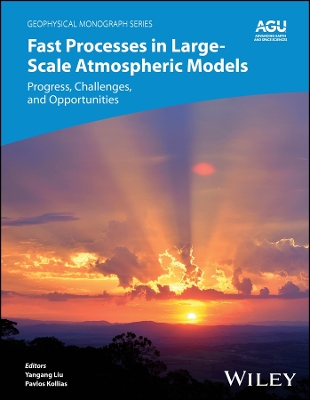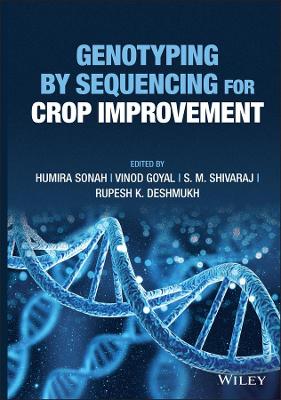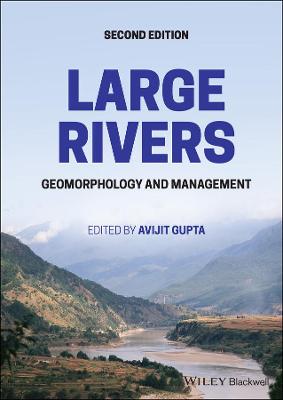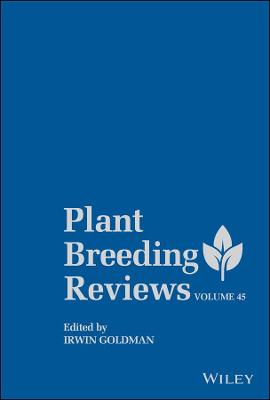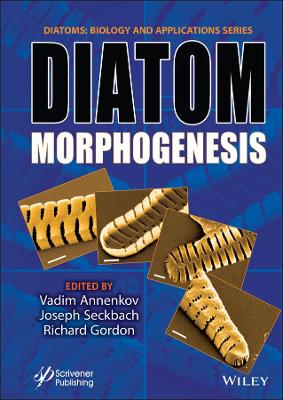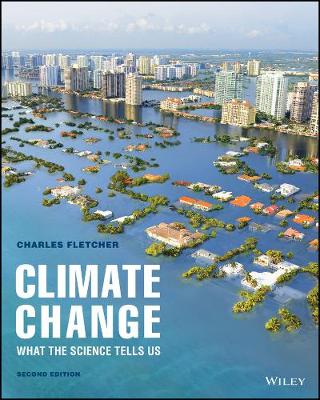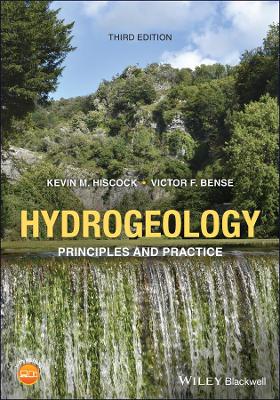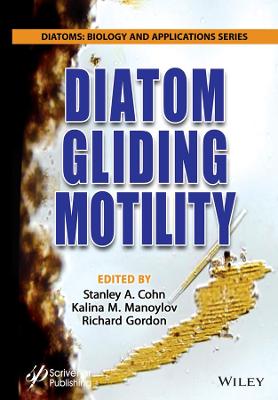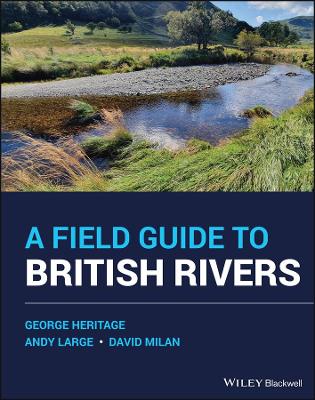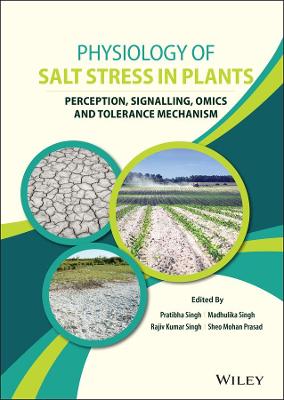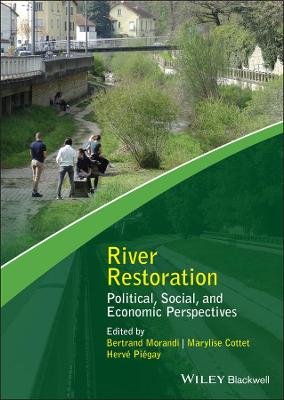Mathematical Macroevolution in Diatom Research
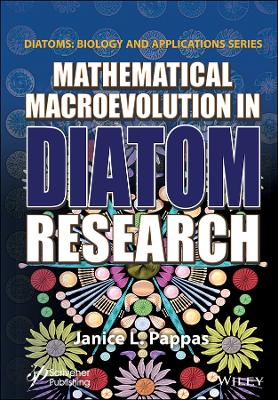 -15%
portes grátis
-15%
portes grátis
Mathematical Macroevolution in Diatom Research
Pappas, Janice L.
John Wiley & Sons Inc
08/2023
544
Dura
Inglês
9781119749851
15 a 20 dias
666
List of Tables xxx
Preface xxxv
Acknowledgments xxxvii
Prologue -- Introductory Remarks xxxix
Part I: Morphological Measurement in Macroevolutionary Distribution Analysis 1
1 Diatom Bauplan, As Modified 2D Valve Face Shapes of a 3D Capped Cylinder and Valve Shape Distribution 3
1.1 Introduction 3
1.1.1 Analytical Valve Shape Geometry 5
1.1.2 Valve Shape Constructs of Diatom Genera 8
1.2 Methods: A Test of Recurrent Diatom Valve Shapes 10
1.2.1 Legendre Polynomials, Hypergeometric Distribution, and Probabilities of Valve Shapes 12
1.2.2 Multivariate Hypergeometric Distribution of Diatom Valve Shapes as Recurrent Forms 15
1.3 Results 18
1.4 Discussion 22
1.4.1 Valve Shape Probability Distribution 22
1.4.2 Hypergeometric Functions and Other Shape Outline Methods 22
1.4.3 Application: Valve Shape Changes and Diversity during the Cenozoic 25
1.4.4 Diatom Valve Shape Distribution: Other Potential Studies 25
1.5 Summary and Future Research 26
1.6 Appendix 26
1.7 References 34
2 Comparative Surface Analysis and Tracking Changes in Diatom Valve Face Morphology 39
2.1 Introduction 39
2.1.1 Image Matching of Surface Features 40
2.1.2 Image Matching: Diatoms 41
2.2 Purpose of this Study 42
2.3 Background on Image and Surface Geometry 42
2.3.1 The Geometry of the Digital Image and the Jacobian 42
2.3.2 The Geometry of the Diatom 3D Surface Model and the Jacobian 45
2.3.3 The Image Gradient and Jacobian 46
2.4 Image Matching Kinematics via the Jacobian 47
2.4.1 Position and Motion: The Kinematics of Image Matching 47
2.4.2 Displacement and Implicit Functions 48
2.4.3 Displacement and Motion: Position and Orientation 49
2.4.4 Surface Feature Matching via the Jacobian 50
2.4.5 The Jacobian of Whole Surface Matching 52
2.5 Methods 53
2.5.1 Fiducial Outcomes of Image Matching of Surface Features 53
2.6 Results 54
2.6.1 Surface Feature Image Matching and the Jacobian 56
2.6.2 Whole Valve Images, Matching of Crest Lines and the Jacobian 60
2.6.3 Image Matching of more than Two Images 65
2.7 Discussion 71
2.7.1 Utility of Jacobian-Based Methods and Image Matching 72
2.7.2 The Image Jacobian and Rotation in A Reference Frame: Potential Application to Diatom Images 73
2.7.3 Deformation and Registration of Image Surfaces: An Alternative Jacobian Calculation 75
2.8 Summary and Future Research 77
2.9 References 77
3 Diatom Valve Morphology, Surface Gradients and Natural Classification 81
3.1 Introduction 81
3.2 Purposes of this Study 82
3.2.1 The Genus Navicula 83
3.3 Methods 84
3.3.1 Naviculoid Diatom Surface Analysis 84
3.3.2 Gradients of Digital Image Surfaces 84
3.3.3 Histogram of Oriented Gradients and Surface Representation 89
3.3.4 Application to Diatom Valve Face Digital Images 90
3.3.5 Support Vector Regression and Classification 90
3.3.6 Using HOG as Combination Gradient Magnitude and Direction Input Data for SVR 91
3.3.7 Computational Efficiency and Cost 95
3.4 Diatom Valve Surface Morphological Analysis 95
3.4.1 SVR Model Fit of Naviculoid Taxa 95
3.4.2 Valve Surface Morphological Classification and Regression of Naviculoid Diatoms 96
3.5 Results 96
3.5.1 HOG Data Analysis 96
3.5.2 Goodness-of-Fit SVR Model Using 4D HOG Data from Naviculoid LMs 100
3.5.3 SVR of Naviculoid 2D HOG Data 102
3.5.4 Second Round of SVR Analysis of Remaining Naviculoid
2D HOG Data 105
3.5.5 Last Round of SVR Analysis of Remaining Naviculoid 2D HOG Data 106
3.5.6 Classification Results from SVR Analysis of Naviculoid Taxa 106
3.6 Discussion 106
3.6.1 Characteristics of SVM and SVR 107
3.6.2 Advantages in Using HOG Data and SVR 108
3.6.3 Potential Utility of HOG Data and SVR in Diatom Research 108
3.7 Summary and Future Research 109
3.8 References 110
Part II: Macroevolutionary Systems Analysis of Diatoms 115
4 Probabilistic Diatom Adaptive Radiation in the Southern Ocean 117
4.1 Introduction 117
4.1.1 Diatoms in the SO 120
4.1.2 Chaetocerotales and Bacillariales Speciation Rates 120
4.1.3 Chaetocerotales and Bacillariales: Fe, NO3 and SiO2 Availability in the SO 121
4.1.4 Modeling Diatom Adaptive Radiation 122
4.2 Purposes of this Study 123
4.3 Mathematical Modeling of Adaptive Radiation 123
4.3.1 Quantitative Phenotypic Trait Measurement and Adaptive Radiation 123
4.3.2 Adaptive Radiation: Implicit Stochastic Models 125
4.3.3 Adaptive Radiation Models: Time Evolution of a Stochastic System 127
4.3.4 Adaptive Radiation as an Optimal Control Problem 128
4.3.5 Exit Probabilities as Boundaries for Completion of Adaptive Radiation 130
4.3.6 Exit Times for the Adaptive Radiation Process 131
4.3.7 Adaptive Radiation: A Study of Southern Ocean Diatoms and Niche Filling 132
4.4 Methods 133
4.4.1 Niche Filling and Adaptive Radiation 134
4.5 Results 134
4.5.1 Ecological Niche Preference, Photosynthesis Efficiency, Nutrient Enrichment or Limitation, and Adaptive Radiation 140
4.5.2 Ecological Niche Preference and Photosynthesis Efficiency Rankings Representing Niche Filling as Adaptive Radiation 141
4.5.3 Niche Filling and the Lyapunov modified OU Adaptive Radiation Model 141
4.6 Discussion 145
4.6.1 More on Specifications for Adaptive Radiation Modeling 146
4.6.2 Diatom Adaptive Radiation Short-Term Trends as a Result of Niche Filling in the SO 147
4.6.3 Other Potential Mathematical Modeling Regimes of Adaptive Radiation 148
4.7 Summary and Future Directions 149
4.7.1 Caveats in Adaptive Radiation Studies to be Considered 149
4.8 References 150
5 Cenozoic Diatom Origination and Extinction and Influences on Diversity 159
5.1 Introduction 159
5.1.1 Cenozoic Diatoms and Environmental Conditions 160
5.1.2 Diatom Diversity during the Cenozoic 161
5.1.3 Diversity as a Result of the Frequency of Origination and Extinction Events 162
5.2 Purposes of this Study 163
5.3 Methods and Background 163
5.3.1 Reconstructed Diatom Origination, Extinction and Diversity during the Cenozoic 163
5.3.2 Cumulative Functions and the Frequency of Cenozoic Origination nd Extinction 165
5.3.3 Origination and Extinction: Heaviside Functions and Switching 167
5.3.4 Origination and Extinction as a Sequence of Steps and Accumulated Switches during the Cenozoic 168
5.3.5 Piecewise Continuous Switching via the Laplace Transform of the Heaviside Functions 168
5.3.6 Overlapping of Origination and Extinction: A Convolution Product 169
5.3.7 Non-Overlapping Origination and Extinction: A Poisson Process 170
5.3.8 Test of Switch Reversibility, Cenozoic Events and a Lyapunov Function 171
5.3.9 Origination and Extinction: Relation to Diversity 172
5.4 Results 173
5.4.1 Cumulative Frequency of Cenozoic Diatom Origination and Extinction Events 173
5.4.2 Switching from Diatom Origination to Extinction over the Cenozoic 176
5.4.3 Origination and Extinction Sequential Steps and Accumulated Switches during the Cenozoic 181
5.4.4 Overlapping via a Convolution Product of Origination and Extinction 183
5.4.5 Origination and Extinction as Poisson Processes 184
5.4.6 Test of Origination and Extinction Switches: Stochastic or Deterministic Chaos? 184
5.4.7 Diversity and Its Relation to Origination and Extinction for Cenozoic Diatoms 185
5.5 Discussion 189
5.5.1 Diversity and the Effects from Origination and Extinction of Cenozoic Diatoms 189
5.5.2 Cenozoic Events and Diatom Diversity, Origination and Extinction 192
5.5.3 Origination and Extinction Related to Diversity: Markov Chain, Martingale, Ergodic Processes, and Lyapunov Functions 193
5.6 Summary and Future Research 194
5.7 References 194
6 Diatom Food Web Dynamics and Hydrodynamics Influences in the Arctic Ocean 199
6.1 Introduction 199
6.2 Purposes of this Study 200
6.3 Background on Arctic Ocean Diatoms 200
6.3.1 Diatoms and their Relation to Sea Ice 200
6.3.2 Sea Ice, Upwelling and Diatom Productivity 201
6.3.3 Diatom Lipid Content as a Proxy for Biomass 203
6.3.4 Diatom Biomass and the Hydrodynamics of Upwelling 203
6.4 Lattice Boltzmann Model 205
6.5 Lattice Boltzmann Model and Hydrodynamics 207
6.5.1 Upwelling and Buoyancy 207
6.5.2 Collisions and Streaming Densities of Diatom Genera during Upwelling 209
6.5.3 Buoyancy and Ice 210
6.5.4 Upwelling and the Splitting of the Cylindrical Rotation of Currents 211
6.6 Lattice Boltzmann Model: Diatom Bloom Density, Sea Ice and Upwelling 211
6.7 Lattice Boltzmann Model: Specifications for Simulation 213
6.7.1 Overview of 2D LBM with Respect to Diatom Genera Lattice Nodes 216
6.7.2 Buoyancy, Upwelling and Diatom Blooms in LBM via p and u 219
6.8 Methods 220
6.9 Results 220
6.10 Discussion 226
6.10.1 Arctic Diatom Food Web Dynamics: Other Potential Outcomes 229
6.10.2 Diatom Blooms: Influences over Time and Space 230
6.11 Summary and Future Research 231
6.12 References 231
Part III: General and Special Functions in Diatom Macroevolutionary Spaces 241
7 Diatom Clade Biogeography: Climate Influences, Phenotypic Integration and Endemism 243
7.1 Introduction 243
7.1.1 Biogeography and Climate 245
7.1.2 Mapping Biogeographic Patterns 246
7.1.3 Biogeography as an Optimization Problem 246
7.1.4 Biogeographic Pattern and Spatial Rate of Change 247
7.1.5 Biogeography, Phenotypic Integration and Phenotypic Novelty 248
7.2 Purposes of this Study 249
7.3 Methods 250
7.3.1 Freshwater Diatom Dispersal Biogeography and the Traveling Salesman Problem 251
7.3.2 Freshwater Diatom Biogeographic Patterns with Respect to Climate 252
7.3.3 Diatom Biogeographic Patterns and Distance Decay 252
7.3.4 Endemism and Continental Area 253
7.3.5 Endemism and Dispersal Distance 253
7.3.6 Endemism, Phenotypic Integration and Phenotypic Novelty: The Raphe 254
7.4 Results 254
7.4.1 Clade Shortest Tours from Continent to Continent with Respect to Climate 257
7.4.2 Magnitude of Clade Tour Stops from Continent to Continent with Respect to Climate 258
7.4.3 Ecological Similarity, Biogeographical Distribution and Distance Decay 262
7.4.4 Biogeographical Distribution of Freshwater Diatom Genera 262
7.4.5 Endemics in each Clade and on each Continent 265
7.4.6 Phenotypic Integration and Relation to Geographic Distribution 266
7.5 Discussion 267
7.5.1 Freshwater Diatom Clade Dispersal and Climate 268
7.5.2 Distance Decay as the Pattern of Dispersal in Freshwater Diatom Biogeography 269
7.5.3 Phenotypic Integration and Diatom Biogeography 269
7.6 Summary and Future Research 270
7.7 References 270
8 Cell Division Timing and Mode of the Diatom Life Cycle 277
8.1 Introduction 277
8.1.1 Evolution of Diatom Cell Division Dynamics 278
8.1.2 Diatom Life Cycle as a Dynamical System 278
8.1.3 Diatom Cell Division and Growth Rate 279
8.1.4 Diatom Cell Size Diminution during Mitosis 280
8.1.5 Diatom Cell Division during Meiosis 281
8.1.6 Diatom Cell Division after Meiosis 282
8.2 Purposes of this Study 283
8.3 Background on the Diatom Cell Cycle 283
8.3.1 Diatom Life Cycle Timing: Stages 283
8.3.2 Diatom Life Cycle Timing: Switches 284
8.3.3 Diatom Life Cycle Timing: Cell Behavior 285
8.4 Modeling the Diatom Life Cycle: Timing of Stages and Switches 286
8.4.1 Delay Differential Equations 286
8.4.2 Solutions to DDEs 286
8.4.3 Mackey-Glass System of DDEs 287
8.4.4 Mackey-Glass System: Stage 1 of the Diatom Life Cycle 288
8.4.5 Mackey-Glass System: Stage 2 of the Diatom Life Cycle 289
8.4.6 Mackey-Glass System: Stages 3 and 4 of the Diatom Life Cycle 289
8.4.7 Mackey-Glass System: The Diatom Life Cycle Switches 290
8.5 Methods 291
8.6 Results 292
8.7 Discussion 300
8.7.1 Cell Size Control and the Diatom Cell Cycle Structure 303
8.7.2 Potential Alterations to the Mackey-Glass System when Applied to the Diatom Life Cycle 304
8.7.3 Mackey-Glass Systems: Utility and Applications 305
8.7.4 Potential Additional Analyses of Results from Mackey-Glass Systems 305
8.8 Summary and Future Research 305
8.9 References 306
9 Diatom Morphospaces, Tree Spaces and Lineage Crown Groups 313
9.1 Introduction 313
9.1.1 Euclidean Spaces are Subspaces of Hilbert and Banach Spaces 315
9.1.2 From Geometrical to Topological Spaces as Mathematical Morphospaces 315
9.2 Occupied and Unoccupied Morphospace 316
9.3 Purposes of this Study 318
9.4 Morphospace Structure and Dynamics 318
9.4.1 Morphospace Networks and All Possible Morphologies 318
9.4.2 Networks, Hierarchy and Morphospace 319
9.5 Phylogeny Structure and Phylogenetic Dynamics 320
9.5.1 Phylogenetic Trees and Mapped Traits 320
9.5.2 Phylogenetic Trees and the Geometry of Tree Spaces 321
9.6 Measuring Occupied Morphospace: Clustering Coefficients 322
9.7 A Brief Background on Diatom Morphospaces 323
9.8 Mathematical Morphospaces in the Context of a Diatom Phylogeny 324
9.9 Methods 325
9.9.1 Input Data for Morphospace Analysis 325
9.9.2 Diatom Lineage Crown Groups Embedded in a Metric Space 326
9.9.3 Diatom Submorphospaces Embedded in a Metric Morphospace 333
9.9.4 Clustering Coefficients as Measures of Occupied Morphospace 334
9.10 Results 334
9.11 Discussion 336
9.11.1 Trees, Networks and Morphospaces 345
9.11.2 Probabilistic Distances in Lineage Crown Group Morphospace 345
9.11.3 Diatom Novelties Versus Repetitive Forms in Occupied Morphospace 345
9.11.4 Diatom Teratologies and Mutagenicities: Influences on Morphology 346
9.11.5 Understanding Diatom Evolution via Morphospace and Phylogenetic Analyses 347
9.12 Summary and Future Research 347
9.12.1 What is Morphological Data? 347
9.12.2 Tempo and Mode of Phylomorphogenetic Spaces 348
9.13 References 348
Part IV: Macroevolutionary Characteristics of Diatoms 355
10 Diatom Morphological Complexity Over Time as a Measurable Dynamical System 357
10.1 Introduction 357
10.1.1 Complexity and Evolution 360
10.2 Diatom Morphological Complexity 360
10.3 Purposes of this Study 361
10.4 Characterizing Morphological Complexity 361
10.5 Information and Morphology 362
10.6 Information and Complexity 363
10.7 Markov Chains and their Properties 364
10.7.1 Markov Chains and Lyapunov Exponents 366
10.8 Ergodicity and Chaoticity 367
10.8.1 Entropy Rates 368
10.9 Kolmogorov Complexity and Entropy 370
10.10 Methods 372
10.10.1 Transition Probability Matrix and Properties of a Markov Chain 372
10.10.2 Measuring Morphological Kolmogorov Complexity 375
10.10.3 Diatom Morphological Complexity over Geologic Time and Comparison of Cretaceous and Cenozoic Taxa 375
10.11 Results 376
10.12 Discussion 385
10.13 Summary and Future Research 389
10.13.1 Is Morphological Complexity Related to Morphological Symmetry? 390
10.14 References 390
11 Diatom Surface Symmetry, Symmetry Groups and Symmetry Breaking 399
11.1 Introduction 399
11.1.1 Geometry as a Basis for Form, Surfaces and Symmetry 399
11.1.2 Inverse Functions as a Basis for Symmetry and Stability 400
11.2 Symmetry of 3D Organismal Surfaces 400
11.2.1 Shape versus Surface Symmetries 401
11.2.2 Geometry of Non-Flat 3D Surfaces: Bidirectional Curvature and Its Relation to Twists and Writhes 402
11.2.3 Knots: Geometry and Topology of Closed Curved Surfaces 403
11.2.4 From Hyperbolic Geometry and Surfaces to Hyperbolic Knots 404
11.2.5 Closed Helices, Hyperbolic Knots and Mobius Surfaces 405
11.3 Symmetry Groups 405
11.3.1 Diatom Surface Symmetry Groups: Cyclic, Reflective, Dihedral, Glide, Scale, and Knot 406
11.3.2 States of Symmetry 407
11.4 Purposes of this Study 409
11.5 Methods 410
11.5.1 Systems of Parametric 3D Equations for Exemplar Diatom Surface Models 411
11.5.2 Symmetry Groups: Cyclic, Reflective, Dihedral, Glide, Scale, and Knot 411
11.5.3 From Partial Derivatives to Ordinary Derivatives to Assess Stability 411
11.5.4 Inverse Jacobian Eigenvalues and Surface Symmetry Analysis 411
11.5.5 Stability and Inverse Jacobian Eigenvalues 414
11.5.6 Diatom Surface Symmetries and Symmetry Group Assessment 415
11.5.7 Vegetative Size Reduction and Symmetry Breaking 416
11.5.8 Relative Stability and Symmetry 416
11.5.9 Symmetry Gradients 416
11.6 Results 417
11.7 Discussion 428
11.7.1 Diatom Surface Symmetries and the Intricacies of Assessment 428
11.7.2 More on Diatom Surface Symmetries and Handedness 429
11.7.3 Diatom Vegetative Reproduction and Symmetry Breaking 429
11.7.4 Symmetry Breaking, Vegetative Reproduction, Size Reduction, and Stability 430
11.7.5 Eigenvalues and Variance: Instability and Fluctuating Asymmetry 430
11.7.6 Symmetry Groups and Evolutionary Dynamics: Symmetry in Diatoms and Adaptation 431
11.8 Summary and Future Research 431
11.9 References 432
12 Evolvability of Diatoms as a Function of 3D Surface Phenotype 437
12.1 Introduction 437
12.1.1 3D Surface Properties -- An Overview 438
12.1.2 From Differential Geometry to the Characterization of 3D Surfaces 438
12.1.3 The Phenotype Characterized via a 3D Surface and Its Geometric Characteristics 440
12.1.4 From Geometric Phenotype to Evolvability 441
12.1.5 Evolvability and Phenotypic Novelty 441
12.1.6 Evolvability and Diatoms 442
12.1.7 Diatom Exemplar Phenotypic and Valve Plication Characteristics 443
12.1.8 Diatom Architecture and the Geometric Phenotype 444
12.2 Purposes of this Study 445
12.3 Methods 445
12.3.1 Phenotypic Inertia 446
12.3.1.1 Measurement of Phenotypic Inertia: Christoffel Symbols 446
12.3.2 Phenotypic Robustness 447
12.3.2.1 Measurement of Phenotypic Robustness: the Hessian 448
12.3.3 Phenotypic Stability 449
12.3.3.1 Measurement of Phenotypic Stability: the Laplacian 449
12.3.4 Evolvability of each Diatom Genus: Actinoptychus, Arachnoidiscus and Cyclotella 450
12.3.5 Evolvability Among Diatom Genera 452
12.3.6 Contribution of Phenotypic Inertia, Robustness and Stability to Evolvability 452
12.3.7 Phenotypic Novelty Measurement 454
12.3.8 Evolvability and Phenotypic Novelty 455
12.4 Results 455
12.4.1 Phenotypic Inertia, Robustness and Stability 460
12.4.2 Evolvability across Genera 463
12.4.3 Evolvability and the Fitness Function Components of Phenotypic Inertia, Robustness and Stability 465
12.4.4 Phenotypic Novelty and Comparison to Evolvability 465
12.5 Discussion 467
12.6 Summary and Future Research 469
12.7 References 470
Epilogue -- Findings and the Future 475
Index 479
List of Tables xxx
Preface xxxv
Acknowledgments xxxvii
Prologue -- Introductory Remarks xxxix
Part I: Morphological Measurement in Macroevolutionary Distribution Analysis 1
1 Diatom Bauplan, As Modified 2D Valve Face Shapes of a 3D Capped Cylinder and Valve Shape Distribution 3
1.1 Introduction 3
1.1.1 Analytical Valve Shape Geometry 5
1.1.2 Valve Shape Constructs of Diatom Genera 8
1.2 Methods: A Test of Recurrent Diatom Valve Shapes 10
1.2.1 Legendre Polynomials, Hypergeometric Distribution, and Probabilities of Valve Shapes 12
1.2.2 Multivariate Hypergeometric Distribution of Diatom Valve Shapes as Recurrent Forms 15
1.3 Results 18
1.4 Discussion 22
1.4.1 Valve Shape Probability Distribution 22
1.4.2 Hypergeometric Functions and Other Shape Outline Methods 22
1.4.3 Application: Valve Shape Changes and Diversity during the Cenozoic 25
1.4.4 Diatom Valve Shape Distribution: Other Potential Studies 25
1.5 Summary and Future Research 26
1.6 Appendix 26
1.7 References 34
2 Comparative Surface Analysis and Tracking Changes in Diatom Valve Face Morphology 39
2.1 Introduction 39
2.1.1 Image Matching of Surface Features 40
2.1.2 Image Matching: Diatoms 41
2.2 Purpose of this Study 42
2.3 Background on Image and Surface Geometry 42
2.3.1 The Geometry of the Digital Image and the Jacobian 42
2.3.2 The Geometry of the Diatom 3D Surface Model and the Jacobian 45
2.3.3 The Image Gradient and Jacobian 46
2.4 Image Matching Kinematics via the Jacobian 47
2.4.1 Position and Motion: The Kinematics of Image Matching 47
2.4.2 Displacement and Implicit Functions 48
2.4.3 Displacement and Motion: Position and Orientation 49
2.4.4 Surface Feature Matching via the Jacobian 50
2.4.5 The Jacobian of Whole Surface Matching 52
2.5 Methods 53
2.5.1 Fiducial Outcomes of Image Matching of Surface Features 53
2.6 Results 54
2.6.1 Surface Feature Image Matching and the Jacobian 56
2.6.2 Whole Valve Images, Matching of Crest Lines and the Jacobian 60
2.6.3 Image Matching of more than Two Images 65
2.7 Discussion 71
2.7.1 Utility of Jacobian-Based Methods and Image Matching 72
2.7.2 The Image Jacobian and Rotation in A Reference Frame: Potential Application to Diatom Images 73
2.7.3 Deformation and Registration of Image Surfaces: An Alternative Jacobian Calculation 75
2.8 Summary and Future Research 77
2.9 References 77
3 Diatom Valve Morphology, Surface Gradients and Natural Classification 81
3.1 Introduction 81
3.2 Purposes of this Study 82
3.2.1 The Genus Navicula 83
3.3 Methods 84
3.3.1 Naviculoid Diatom Surface Analysis 84
3.3.2 Gradients of Digital Image Surfaces 84
3.3.3 Histogram of Oriented Gradients and Surface Representation 89
3.3.4 Application to Diatom Valve Face Digital Images 90
3.3.5 Support Vector Regression and Classification 90
3.3.6 Using HOG as Combination Gradient Magnitude and Direction Input Data for SVR 91
3.3.7 Computational Efficiency and Cost 95
3.4 Diatom Valve Surface Morphological Analysis 95
3.4.1 SVR Model Fit of Naviculoid Taxa 95
3.4.2 Valve Surface Morphological Classification and Regression of Naviculoid Diatoms 96
3.5 Results 96
3.5.1 HOG Data Analysis 96
3.5.2 Goodness-of-Fit SVR Model Using 4D HOG Data from Naviculoid LMs 100
3.5.3 SVR of Naviculoid 2D HOG Data 102
3.5.4 Second Round of SVR Analysis of Remaining Naviculoid
2D HOG Data 105
3.5.5 Last Round of SVR Analysis of Remaining Naviculoid 2D HOG Data 106
3.5.6 Classification Results from SVR Analysis of Naviculoid Taxa 106
3.6 Discussion 106
3.6.1 Characteristics of SVM and SVR 107
3.6.2 Advantages in Using HOG Data and SVR 108
3.6.3 Potential Utility of HOG Data and SVR in Diatom Research 108
3.7 Summary and Future Research 109
3.8 References 110
Part II: Macroevolutionary Systems Analysis of Diatoms 115
4 Probabilistic Diatom Adaptive Radiation in the Southern Ocean 117
4.1 Introduction 117
4.1.1 Diatoms in the SO 120
4.1.2 Chaetocerotales and Bacillariales Speciation Rates 120
4.1.3 Chaetocerotales and Bacillariales: Fe, NO3 and SiO2 Availability in the SO 121
4.1.4 Modeling Diatom Adaptive Radiation 122
4.2 Purposes of this Study 123
4.3 Mathematical Modeling of Adaptive Radiation 123
4.3.1 Quantitative Phenotypic Trait Measurement and Adaptive Radiation 123
4.3.2 Adaptive Radiation: Implicit Stochastic Models 125
4.3.3 Adaptive Radiation Models: Time Evolution of a Stochastic System 127
4.3.4 Adaptive Radiation as an Optimal Control Problem 128
4.3.5 Exit Probabilities as Boundaries for Completion of Adaptive Radiation 130
4.3.6 Exit Times for the Adaptive Radiation Process 131
4.3.7 Adaptive Radiation: A Study of Southern Ocean Diatoms and Niche Filling 132
4.4 Methods 133
4.4.1 Niche Filling and Adaptive Radiation 134
4.5 Results 134
4.5.1 Ecological Niche Preference, Photosynthesis Efficiency, Nutrient Enrichment or Limitation, and Adaptive Radiation 140
4.5.2 Ecological Niche Preference and Photosynthesis Efficiency Rankings Representing Niche Filling as Adaptive Radiation 141
4.5.3 Niche Filling and the Lyapunov modified OU Adaptive Radiation Model 141
4.6 Discussion 145
4.6.1 More on Specifications for Adaptive Radiation Modeling 146
4.6.2 Diatom Adaptive Radiation Short-Term Trends as a Result of Niche Filling in the SO 147
4.6.3 Other Potential Mathematical Modeling Regimes of Adaptive Radiation 148
4.7 Summary and Future Directions 149
4.7.1 Caveats in Adaptive Radiation Studies to be Considered 149
4.8 References 150
5 Cenozoic Diatom Origination and Extinction and Influences on Diversity 159
5.1 Introduction 159
5.1.1 Cenozoic Diatoms and Environmental Conditions 160
5.1.2 Diatom Diversity during the Cenozoic 161
5.1.3 Diversity as a Result of the Frequency of Origination and Extinction Events 162
5.2 Purposes of this Study 163
5.3 Methods and Background 163
5.3.1 Reconstructed Diatom Origination, Extinction and Diversity during the Cenozoic 163
5.3.2 Cumulative Functions and the Frequency of Cenozoic Origination nd Extinction 165
5.3.3 Origination and Extinction: Heaviside Functions and Switching 167
5.3.4 Origination and Extinction as a Sequence of Steps and Accumulated Switches during the Cenozoic 168
5.3.5 Piecewise Continuous Switching via the Laplace Transform of the Heaviside Functions 168
5.3.6 Overlapping of Origination and Extinction: A Convolution Product 169
5.3.7 Non-Overlapping Origination and Extinction: A Poisson Process 170
5.3.8 Test of Switch Reversibility, Cenozoic Events and a Lyapunov Function 171
5.3.9 Origination and Extinction: Relation to Diversity 172
5.4 Results 173
5.4.1 Cumulative Frequency of Cenozoic Diatom Origination and Extinction Events 173
5.4.2 Switching from Diatom Origination to Extinction over the Cenozoic 176
5.4.3 Origination and Extinction Sequential Steps and Accumulated Switches during the Cenozoic 181
5.4.4 Overlapping via a Convolution Product of Origination and Extinction 183
5.4.5 Origination and Extinction as Poisson Processes 184
5.4.6 Test of Origination and Extinction Switches: Stochastic or Deterministic Chaos? 184
5.4.7 Diversity and Its Relation to Origination and Extinction for Cenozoic Diatoms 185
5.5 Discussion 189
5.5.1 Diversity and the Effects from Origination and Extinction of Cenozoic Diatoms 189
5.5.2 Cenozoic Events and Diatom Diversity, Origination and Extinction 192
5.5.3 Origination and Extinction Related to Diversity: Markov Chain, Martingale, Ergodic Processes, and Lyapunov Functions 193
5.6 Summary and Future Research 194
5.7 References 194
6 Diatom Food Web Dynamics and Hydrodynamics Influences in the Arctic Ocean 199
6.1 Introduction 199
6.2 Purposes of this Study 200
6.3 Background on Arctic Ocean Diatoms 200
6.3.1 Diatoms and their Relation to Sea Ice 200
6.3.2 Sea Ice, Upwelling and Diatom Productivity 201
6.3.3 Diatom Lipid Content as a Proxy for Biomass 203
6.3.4 Diatom Biomass and the Hydrodynamics of Upwelling 203
6.4 Lattice Boltzmann Model 205
6.5 Lattice Boltzmann Model and Hydrodynamics 207
6.5.1 Upwelling and Buoyancy 207
6.5.2 Collisions and Streaming Densities of Diatom Genera during Upwelling 209
6.5.3 Buoyancy and Ice 210
6.5.4 Upwelling and the Splitting of the Cylindrical Rotation of Currents 211
6.6 Lattice Boltzmann Model: Diatom Bloom Density, Sea Ice and Upwelling 211
6.7 Lattice Boltzmann Model: Specifications for Simulation 213
6.7.1 Overview of 2D LBM with Respect to Diatom Genera Lattice Nodes 216
6.7.2 Buoyancy, Upwelling and Diatom Blooms in LBM via p and u 219
6.8 Methods 220
6.9 Results 220
6.10 Discussion 226
6.10.1 Arctic Diatom Food Web Dynamics: Other Potential Outcomes 229
6.10.2 Diatom Blooms: Influences over Time and Space 230
6.11 Summary and Future Research 231
6.12 References 231
Part III: General and Special Functions in Diatom Macroevolutionary Spaces 241
7 Diatom Clade Biogeography: Climate Influences, Phenotypic Integration and Endemism 243
7.1 Introduction 243
7.1.1 Biogeography and Climate 245
7.1.2 Mapping Biogeographic Patterns 246
7.1.3 Biogeography as an Optimization Problem 246
7.1.4 Biogeographic Pattern and Spatial Rate of Change 247
7.1.5 Biogeography, Phenotypic Integration and Phenotypic Novelty 248
7.2 Purposes of this Study 249
7.3 Methods 250
7.3.1 Freshwater Diatom Dispersal Biogeography and the Traveling Salesman Problem 251
7.3.2 Freshwater Diatom Biogeographic Patterns with Respect to Climate 252
7.3.3 Diatom Biogeographic Patterns and Distance Decay 252
7.3.4 Endemism and Continental Area 253
7.3.5 Endemism and Dispersal Distance 253
7.3.6 Endemism, Phenotypic Integration and Phenotypic Novelty: The Raphe 254
7.4 Results 254
7.4.1 Clade Shortest Tours from Continent to Continent with Respect to Climate 257
7.4.2 Magnitude of Clade Tour Stops from Continent to Continent with Respect to Climate 258
7.4.3 Ecological Similarity, Biogeographical Distribution and Distance Decay 262
7.4.4 Biogeographical Distribution of Freshwater Diatom Genera 262
7.4.5 Endemics in each Clade and on each Continent 265
7.4.6 Phenotypic Integration and Relation to Geographic Distribution 266
7.5 Discussion 267
7.5.1 Freshwater Diatom Clade Dispersal and Climate 268
7.5.2 Distance Decay as the Pattern of Dispersal in Freshwater Diatom Biogeography 269
7.5.3 Phenotypic Integration and Diatom Biogeography 269
7.6 Summary and Future Research 270
7.7 References 270
8 Cell Division Timing and Mode of the Diatom Life Cycle 277
8.1 Introduction 277
8.1.1 Evolution of Diatom Cell Division Dynamics 278
8.1.2 Diatom Life Cycle as a Dynamical System 278
8.1.3 Diatom Cell Division and Growth Rate 279
8.1.4 Diatom Cell Size Diminution during Mitosis 280
8.1.5 Diatom Cell Division during Meiosis 281
8.1.6 Diatom Cell Division after Meiosis 282
8.2 Purposes of this Study 283
8.3 Background on the Diatom Cell Cycle 283
8.3.1 Diatom Life Cycle Timing: Stages 283
8.3.2 Diatom Life Cycle Timing: Switches 284
8.3.3 Diatom Life Cycle Timing: Cell Behavior 285
8.4 Modeling the Diatom Life Cycle: Timing of Stages and Switches 286
8.4.1 Delay Differential Equations 286
8.4.2 Solutions to DDEs 286
8.4.3 Mackey-Glass System of DDEs 287
8.4.4 Mackey-Glass System: Stage 1 of the Diatom Life Cycle 288
8.4.5 Mackey-Glass System: Stage 2 of the Diatom Life Cycle 289
8.4.6 Mackey-Glass System: Stages 3 and 4 of the Diatom Life Cycle 289
8.4.7 Mackey-Glass System: The Diatom Life Cycle Switches 290
8.5 Methods 291
8.6 Results 292
8.7 Discussion 300
8.7.1 Cell Size Control and the Diatom Cell Cycle Structure 303
8.7.2 Potential Alterations to the Mackey-Glass System when Applied to the Diatom Life Cycle 304
8.7.3 Mackey-Glass Systems: Utility and Applications 305
8.7.4 Potential Additional Analyses of Results from Mackey-Glass Systems 305
8.8 Summary and Future Research 305
8.9 References 306
9 Diatom Morphospaces, Tree Spaces and Lineage Crown Groups 313
9.1 Introduction 313
9.1.1 Euclidean Spaces are Subspaces of Hilbert and Banach Spaces 315
9.1.2 From Geometrical to Topological Spaces as Mathematical Morphospaces 315
9.2 Occupied and Unoccupied Morphospace 316
9.3 Purposes of this Study 318
9.4 Morphospace Structure and Dynamics 318
9.4.1 Morphospace Networks and All Possible Morphologies 318
9.4.2 Networks, Hierarchy and Morphospace 319
9.5 Phylogeny Structure and Phylogenetic Dynamics 320
9.5.1 Phylogenetic Trees and Mapped Traits 320
9.5.2 Phylogenetic Trees and the Geometry of Tree Spaces 321
9.6 Measuring Occupied Morphospace: Clustering Coefficients 322
9.7 A Brief Background on Diatom Morphospaces 323
9.8 Mathematical Morphospaces in the Context of a Diatom Phylogeny 324
9.9 Methods 325
9.9.1 Input Data for Morphospace Analysis 325
9.9.2 Diatom Lineage Crown Groups Embedded in a Metric Space 326
9.9.3 Diatom Submorphospaces Embedded in a Metric Morphospace 333
9.9.4 Clustering Coefficients as Measures of Occupied Morphospace 334
9.10 Results 334
9.11 Discussion 336
9.11.1 Trees, Networks and Morphospaces 345
9.11.2 Probabilistic Distances in Lineage Crown Group Morphospace 345
9.11.3 Diatom Novelties Versus Repetitive Forms in Occupied Morphospace 345
9.11.4 Diatom Teratologies and Mutagenicities: Influences on Morphology 346
9.11.5 Understanding Diatom Evolution via Morphospace and Phylogenetic Analyses 347
9.12 Summary and Future Research 347
9.12.1 What is Morphological Data? 347
9.12.2 Tempo and Mode of Phylomorphogenetic Spaces 348
9.13 References 348
Part IV: Macroevolutionary Characteristics of Diatoms 355
10 Diatom Morphological Complexity Over Time as a Measurable Dynamical System 357
10.1 Introduction 357
10.1.1 Complexity and Evolution 360
10.2 Diatom Morphological Complexity 360
10.3 Purposes of this Study 361
10.4 Characterizing Morphological Complexity 361
10.5 Information and Morphology 362
10.6 Information and Complexity 363
10.7 Markov Chains and their Properties 364
10.7.1 Markov Chains and Lyapunov Exponents 366
10.8 Ergodicity and Chaoticity 367
10.8.1 Entropy Rates 368
10.9 Kolmogorov Complexity and Entropy 370
10.10 Methods 372
10.10.1 Transition Probability Matrix and Properties of a Markov Chain 372
10.10.2 Measuring Morphological Kolmogorov Complexity 375
10.10.3 Diatom Morphological Complexity over Geologic Time and Comparison of Cretaceous and Cenozoic Taxa 375
10.11 Results 376
10.12 Discussion 385
10.13 Summary and Future Research 389
10.13.1 Is Morphological Complexity Related to Morphological Symmetry? 390
10.14 References 390
11 Diatom Surface Symmetry, Symmetry Groups and Symmetry Breaking 399
11.1 Introduction 399
11.1.1 Geometry as a Basis for Form, Surfaces and Symmetry 399
11.1.2 Inverse Functions as a Basis for Symmetry and Stability 400
11.2 Symmetry of 3D Organismal Surfaces 400
11.2.1 Shape versus Surface Symmetries 401
11.2.2 Geometry of Non-Flat 3D Surfaces: Bidirectional Curvature and Its Relation to Twists and Writhes 402
11.2.3 Knots: Geometry and Topology of Closed Curved Surfaces 403
11.2.4 From Hyperbolic Geometry and Surfaces to Hyperbolic Knots 404
11.2.5 Closed Helices, Hyperbolic Knots and Mobius Surfaces 405
11.3 Symmetry Groups 405
11.3.1 Diatom Surface Symmetry Groups: Cyclic, Reflective, Dihedral, Glide, Scale, and Knot 406
11.3.2 States of Symmetry 407
11.4 Purposes of this Study 409
11.5 Methods 410
11.5.1 Systems of Parametric 3D Equations for Exemplar Diatom Surface Models 411
11.5.2 Symmetry Groups: Cyclic, Reflective, Dihedral, Glide, Scale, and Knot 411
11.5.3 From Partial Derivatives to Ordinary Derivatives to Assess Stability 411
11.5.4 Inverse Jacobian Eigenvalues and Surface Symmetry Analysis 411
11.5.5 Stability and Inverse Jacobian Eigenvalues 414
11.5.6 Diatom Surface Symmetries and Symmetry Group Assessment 415
11.5.7 Vegetative Size Reduction and Symmetry Breaking 416
11.5.8 Relative Stability and Symmetry 416
11.5.9 Symmetry Gradients 416
11.6 Results 417
11.7 Discussion 428
11.7.1 Diatom Surface Symmetries and the Intricacies of Assessment 428
11.7.2 More on Diatom Surface Symmetries and Handedness 429
11.7.3 Diatom Vegetative Reproduction and Symmetry Breaking 429
11.7.4 Symmetry Breaking, Vegetative Reproduction, Size Reduction, and Stability 430
11.7.5 Eigenvalues and Variance: Instability and Fluctuating Asymmetry 430
11.7.6 Symmetry Groups and Evolutionary Dynamics: Symmetry in Diatoms and Adaptation 431
11.8 Summary and Future Research 431
11.9 References 432
12 Evolvability of Diatoms as a Function of 3D Surface Phenotype 437
12.1 Introduction 437
12.1.1 3D Surface Properties -- An Overview 438
12.1.2 From Differential Geometry to the Characterization of 3D Surfaces 438
12.1.3 The Phenotype Characterized via a 3D Surface and Its Geometric Characteristics 440
12.1.4 From Geometric Phenotype to Evolvability 441
12.1.5 Evolvability and Phenotypic Novelty 441
12.1.6 Evolvability and Diatoms 442
12.1.7 Diatom Exemplar Phenotypic and Valve Plication Characteristics 443
12.1.8 Diatom Architecture and the Geometric Phenotype 444
12.2 Purposes of this Study 445
12.3 Methods 445
12.3.1 Phenotypic Inertia 446
12.3.1.1 Measurement of Phenotypic Inertia: Christoffel Symbols 446
12.3.2 Phenotypic Robustness 447
12.3.2.1 Measurement of Phenotypic Robustness: the Hessian 448
12.3.3 Phenotypic Stability 449
12.3.3.1 Measurement of Phenotypic Stability: the Laplacian 449
12.3.4 Evolvability of each Diatom Genus: Actinoptychus, Arachnoidiscus and Cyclotella 450
12.3.5 Evolvability Among Diatom Genera 452
12.3.6 Contribution of Phenotypic Inertia, Robustness and Stability to Evolvability 452
12.3.7 Phenotypic Novelty Measurement 454
12.3.8 Evolvability and Phenotypic Novelty 455
12.4 Results 455
12.4.1 Phenotypic Inertia, Robustness and Stability 460
12.4.2 Evolvability across Genera 463
12.4.3 Evolvability and the Fitness Function Components of Phenotypic Inertia, Robustness and Stability 465
12.4.4 Phenotypic Novelty and Comparison to Evolvability 465
12.5 Discussion 467
12.6 Summary and Future Research 469
12.7 References 470
Epilogue -- Findings and the Future 475
Index 479





